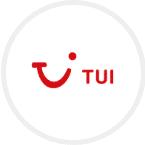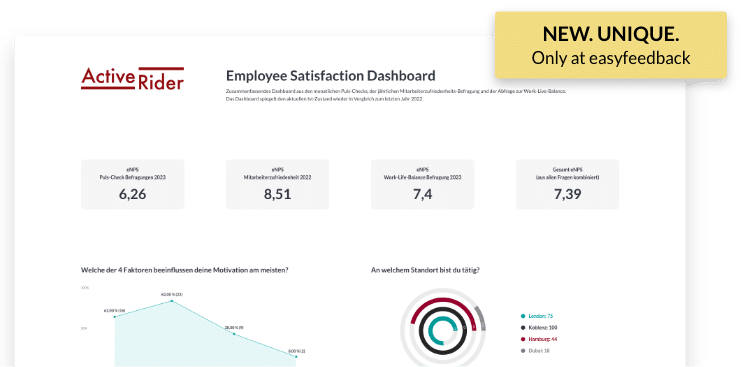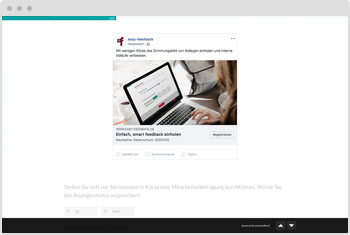How well known is your brand? Find out with a simple survey.

With this ready-to-use survey template, you'll gain important insights into the demographic characteristics of your target audience and their affinity for brands.

“Identifying customer needs is an essential part of our business. easyfeedback accompanies us for many years as a loyal partner in this task. We particularly appreciate the intuitive usability of the survey tool as well as the professional support.”
Guild Lead User Experience Research

“We use easyfeedback for internal and external surveys – fast, comfortable and really easy! Straightforward and cordial support can always create a smile. We really appreciate the permanent development of the platform.”
Guest & Competitor Insights Analyst
Content and targets of this brand awareness template
How is your brand perceived? How do the perspectives of regular customers and first-time buyers differ? Customers can be attracted to different aspects of a brand.
Brand strength and customer loyalty are equally influenced by the perception of a brand. Determine brand awareness among your target groups and customers. Give your brand strategy new impulses through direct feedback from customers by conducting your own market research. The value of a brand increases with its perception and ownership.
Content:
• Direct feedback on brand strength
• Are customers more attached to the corporate brand or product brand
• Is your brand perceived more soberly or emotionally
• What attributes does your brand possess in the perception of customers
• Which attributes shape brand awareness
Targets:
• Place products systematically
• Identify exploitation and development potentials
• Steer product development
• Strengthen brand awareness
• Further develop brand strength

Data privacy protection „made in Germany“ (GDPR)

Anonymity functions for open feedback
Almost everything you need to know about brand awareness
1. What does brand awareness mean?
The term brand awareness refers to the degree to which a brand is known. This involves examining the extent to which people surveyed know the brand and its products.
Brand awareness plays a particularly important role in B2C marketing and e-commerce, as it can have a significant influence on purchasing decisions.
This is due, among other things, to the fact that the customer cannot take the product in his hands when buying on the Internet; he can neither test it nor does he have classic advice from a salesperson. In this case, the customer more often goes for the better-known brand product than for an unknown brand or a no-name product, because he trusts the brand more.
2. What does brand awareness mean?
Brand awareness describes the preference for branded products compared with no-name products. Because of their familiarity, brands are often trusted more.
Brands therefore have a certain power that can influence people’s buying and consumption behavior. Factors such as quality, image and prestige have a subjective effect on the emotional attitude toward a brand.
Companies therefore focus on establishing the brand with consumers and interested parties through targeted marketing and communication activities and using it as an advertising ambassador as well as to build trust.
3. What form can brand awareness take?
A person’s awareness of a brand can be expressed in many forms. We have listed four forms below:
1. Brand loyalty
If a customer repeatedly buys products from a brand, then he tends to make his purchase decision in favor of the brand and often pays no attention to competing products. An example of a brand with high brand loyalty is Apple. Once a customer has purchased an Apple product, they often remain loyal to the brand for many years.
2. Brand trust
Brand trust is the willingness of a customer to blindly trust a brand and its products to deliver on expectations and performance. This is usually accompanied by a high level of trust in the company, also in terms of complaints, claims and problems being resolved satisfactorily.
3. Brand identification
Brand identification is about the perception of commonalities with a brand or the company behind it. Common views such as environmental sustainability or the provision of a special experience, for example the freedom to drive anywhere in a car, play a role here.
4. Brand worship
The most extreme form of brand awareness is brand worship. Here, the brand has managed to achieve cult status through exceptional products, a high profile, tradition or popularity. Examples of cult brands include Nutella, Nivea, Nike and Harley-Davidson.
4. What levels can brand awareness be divided into?
Brand awareness is divided into three levels, which we have listed for you below:
Stage 1: Top of Mind
The brand remains present in the memory and is therefore immediately recognized by people.
Stage 2: Unaided recall
People recognize the brand, but have to think longer before they remember the name.
Stage 3: Aided recall
People must be actively helped by memory aids such as photos, videos, slogans, etc. so that they remember the brand name.
5. How can brand awareness be measured?
There are various ways to measure brand awareness directly or indirectly. In the following we have explained a few possibilities:
1. Surveys
With the help of surveys, which you can conduct in a variety of ways (online, in writing, by phone or in person), you can directly ask how well known your brand is. You can find a questionnaire for measuring brand awareness in our templates.
2. Website traffic
Direct visits to your website give you an indication of how well known your brand is. A steady increase in direct hits to your website means that more people have heard of your brand and they are typing your website URL directly into their browsers, rather than having to search through Google first.
But other traffic sources, such as social media or referrals, can also provide another indication of your brand’s awareness. Therefore, it makes sense to check not only the direct hits, but the entire sources of access to your website.
3. Social Media & Social Listening
By checking the effectiveness of posts on your own social media channels (follower count, likes, retweets, comments), you can also draw conclusions about the awareness of your brand.
Tracking brand-related likes, comments, tweets through social monitoring tools (social listening) can also be used to measure brand awarness. This will tell you how the brand is perceived on social media and give you a chance to get to know consumers better and identify areas for improvement.
4. Verbal awareness
Is your brand being talked about online or offline? Are there articles in newspapers, magazines or on TV? So this also gives you conclusions about your brand awareness.
6. What are the key performance indicators (KPIs) for measuring brand awareness?
We have listed the most important key figures below:
Recognition value
A questionnaire for measuring brand awareness can be used to check how high the recognition value of the brand is by the participants surveyed.
This is not only about whether the participants recognize the brand, but also whether they need help from memory aids and how quickly they recognize the brand.
Search volume
The frequency of mentions of the brand, for example on social media channels or video formats, and how often they are entered into search engines can also be an important metric.
Reach
You can also draw conclusions about your brand awareness through the reach of your social media posts and when the brand is mentioned, for example, by influencers or in magazine articles.
Economic key figures
Economic key figures such as sales or the customer retention rate are also important metrics.
More market research survey templates
Explore all survey templates
You are in professional company







easyfeedback welcomes more than 740.000 participants per month!







